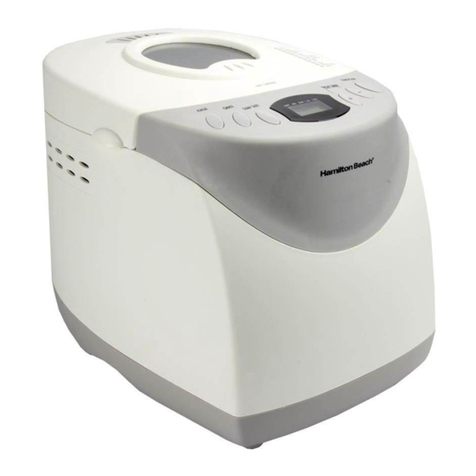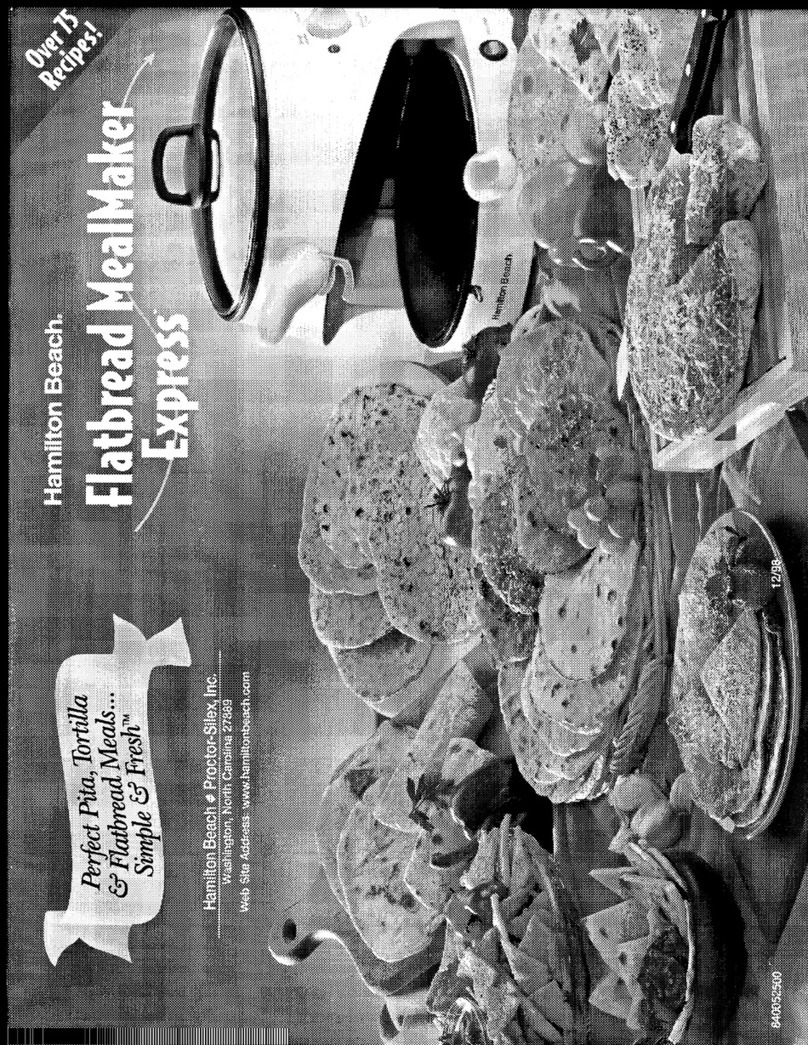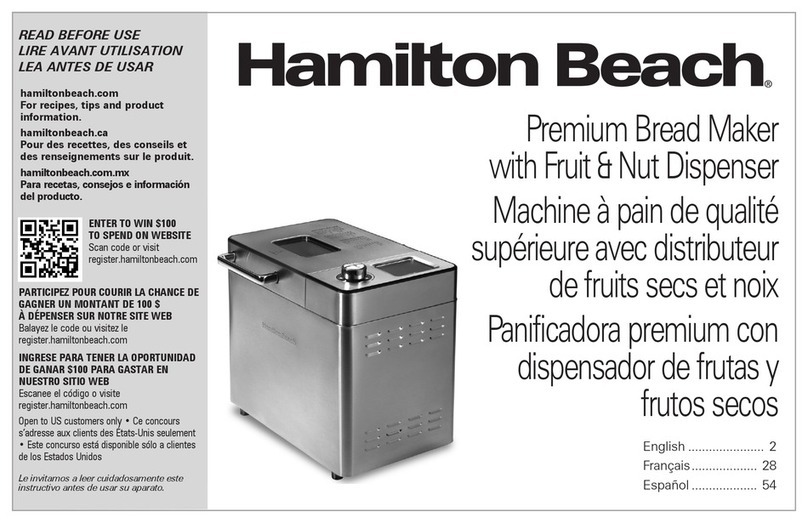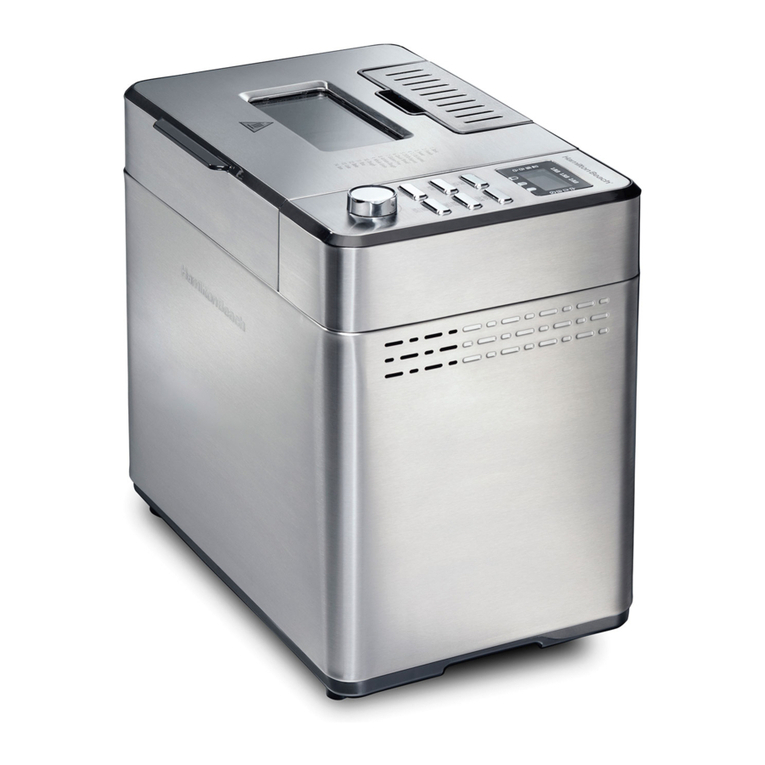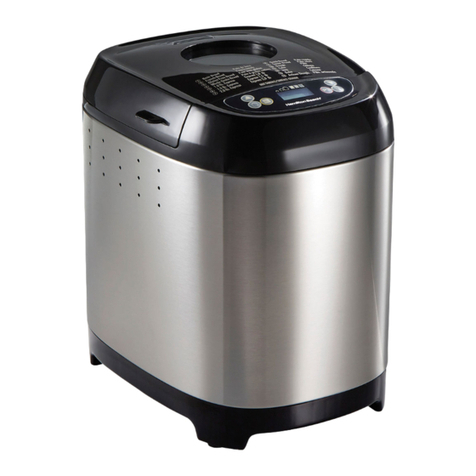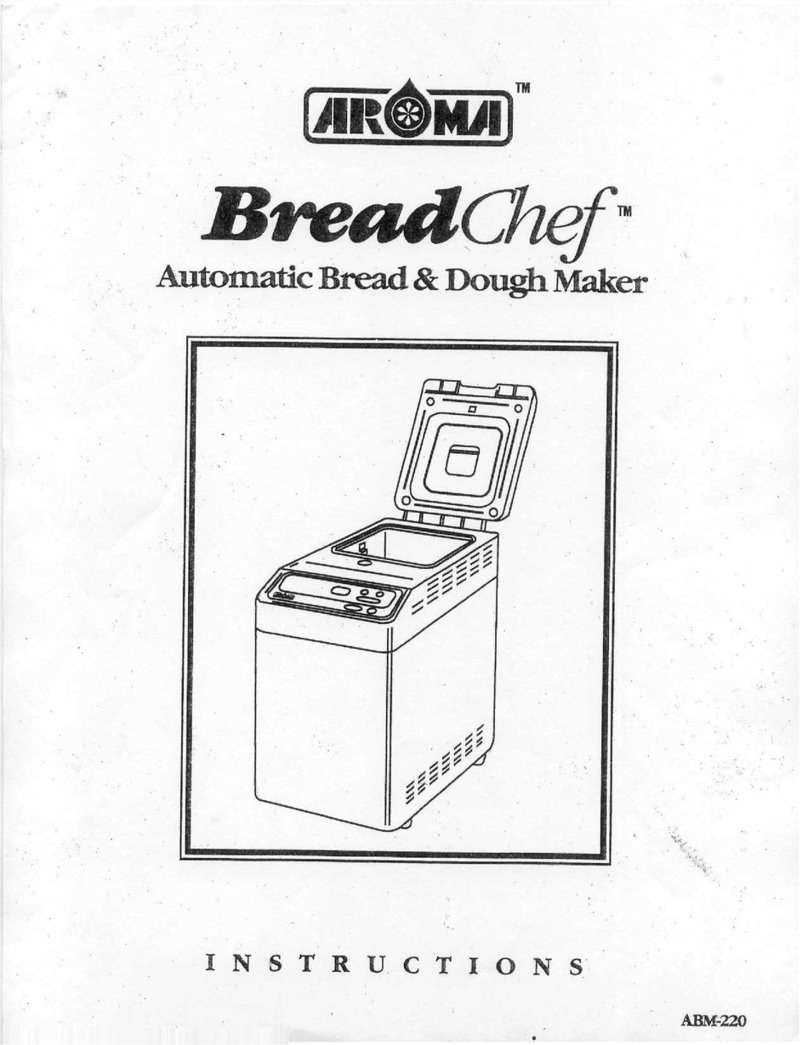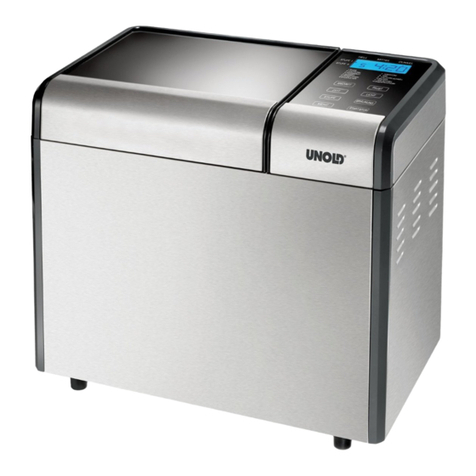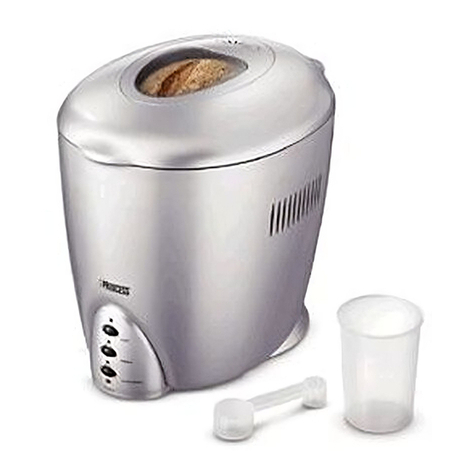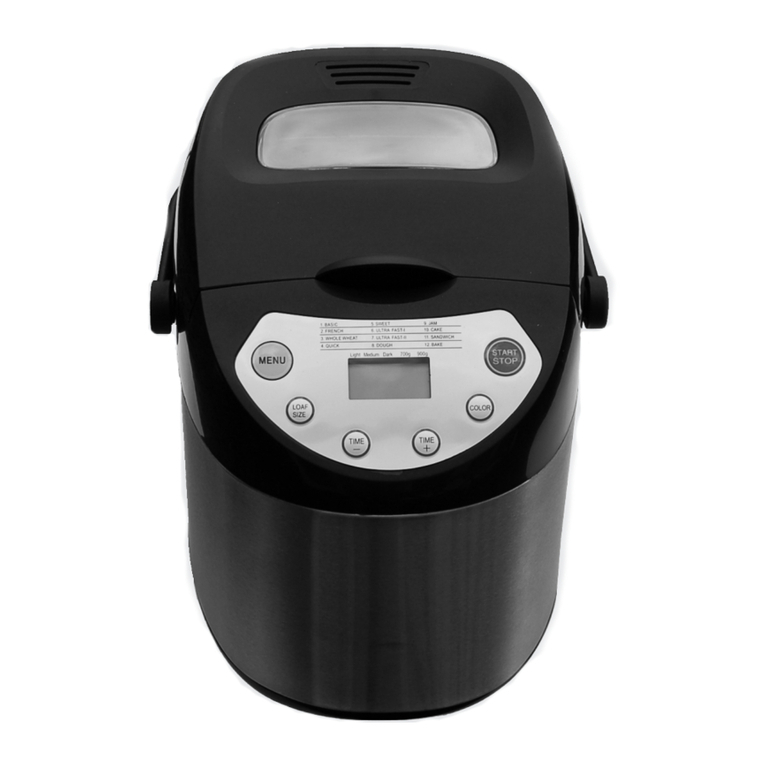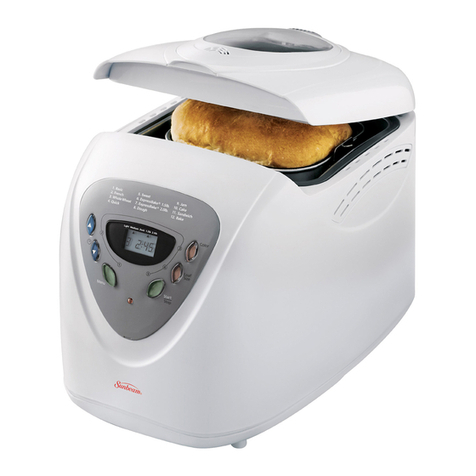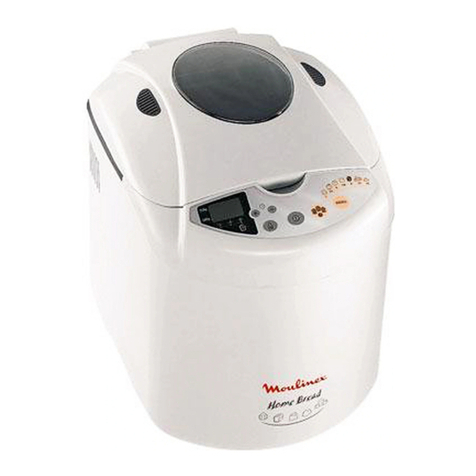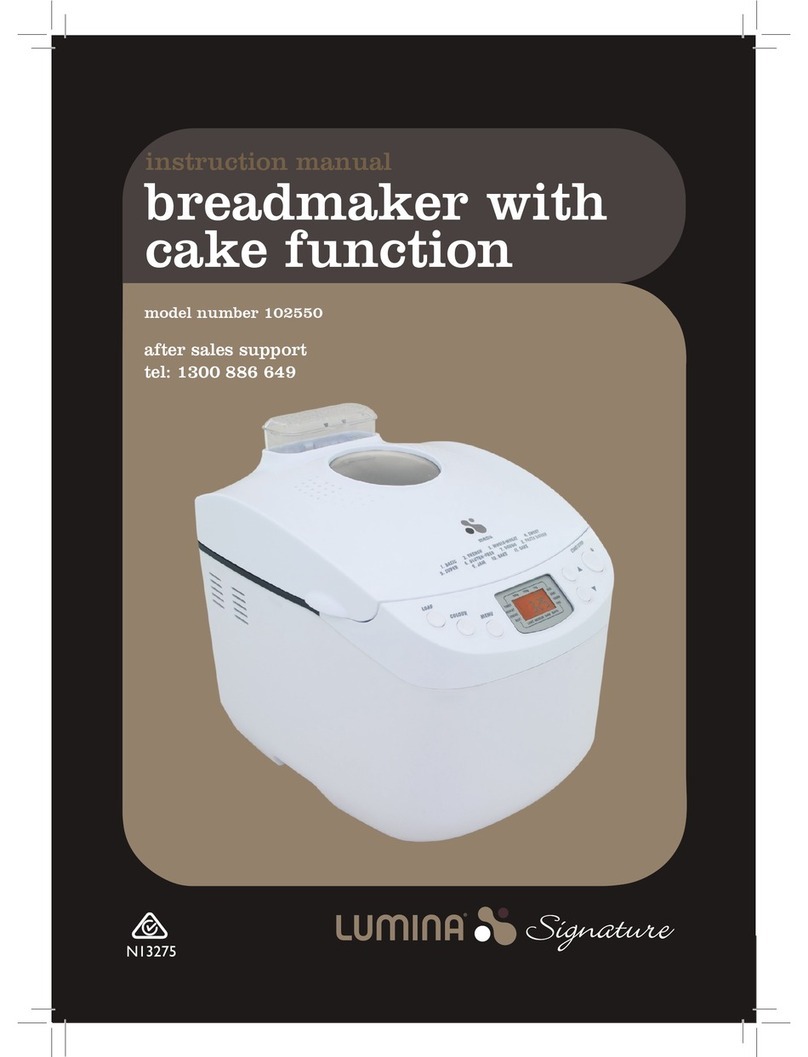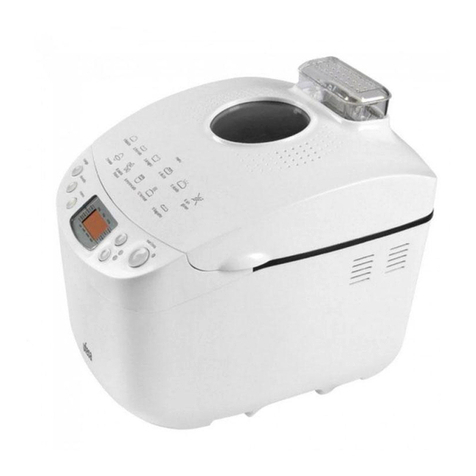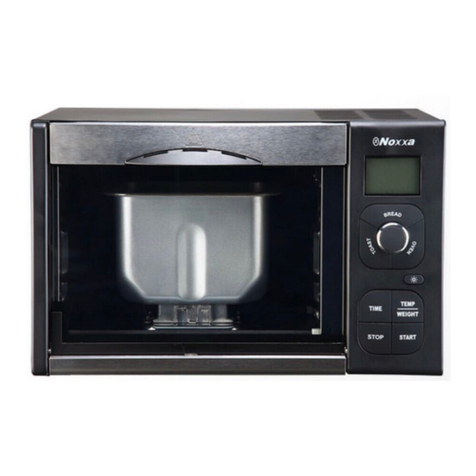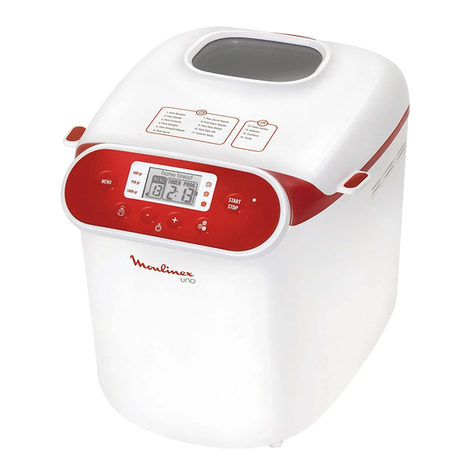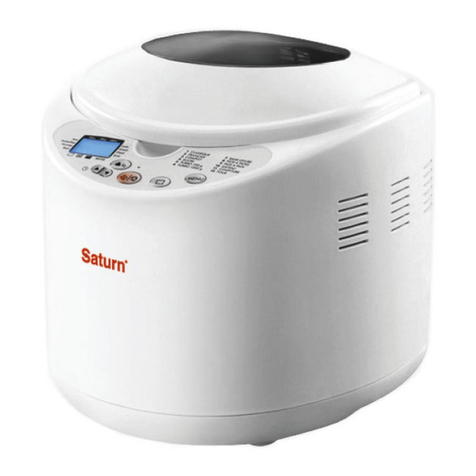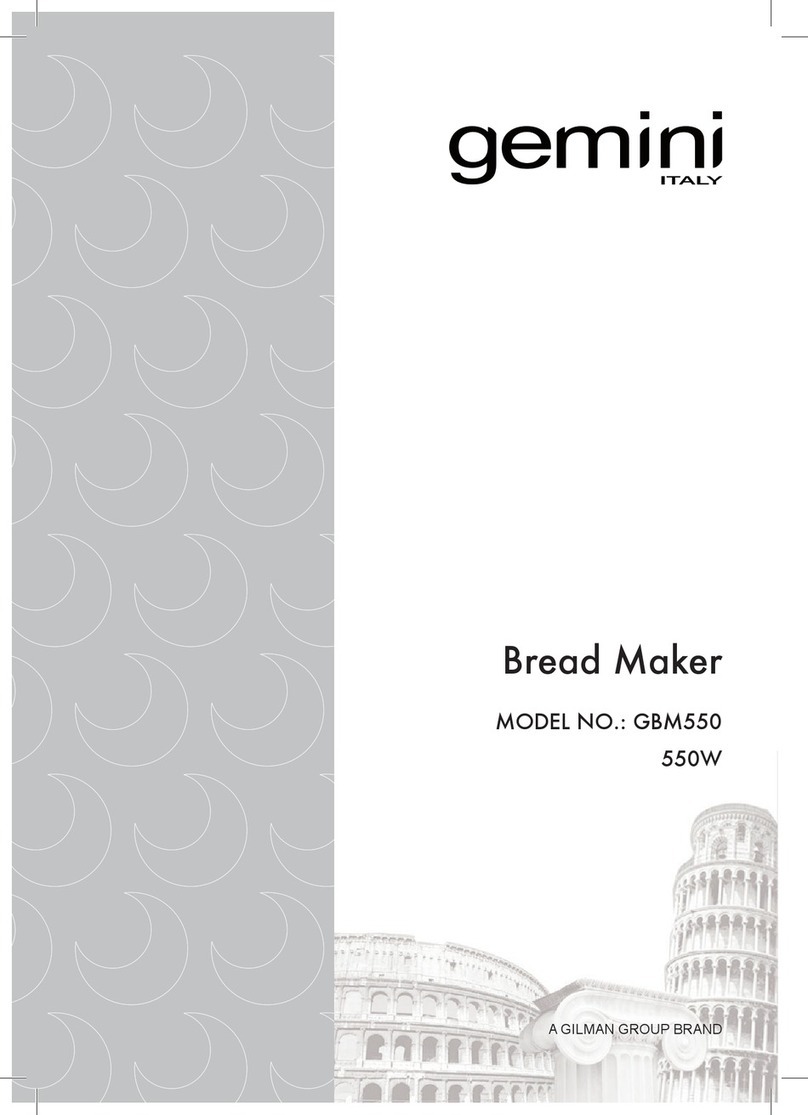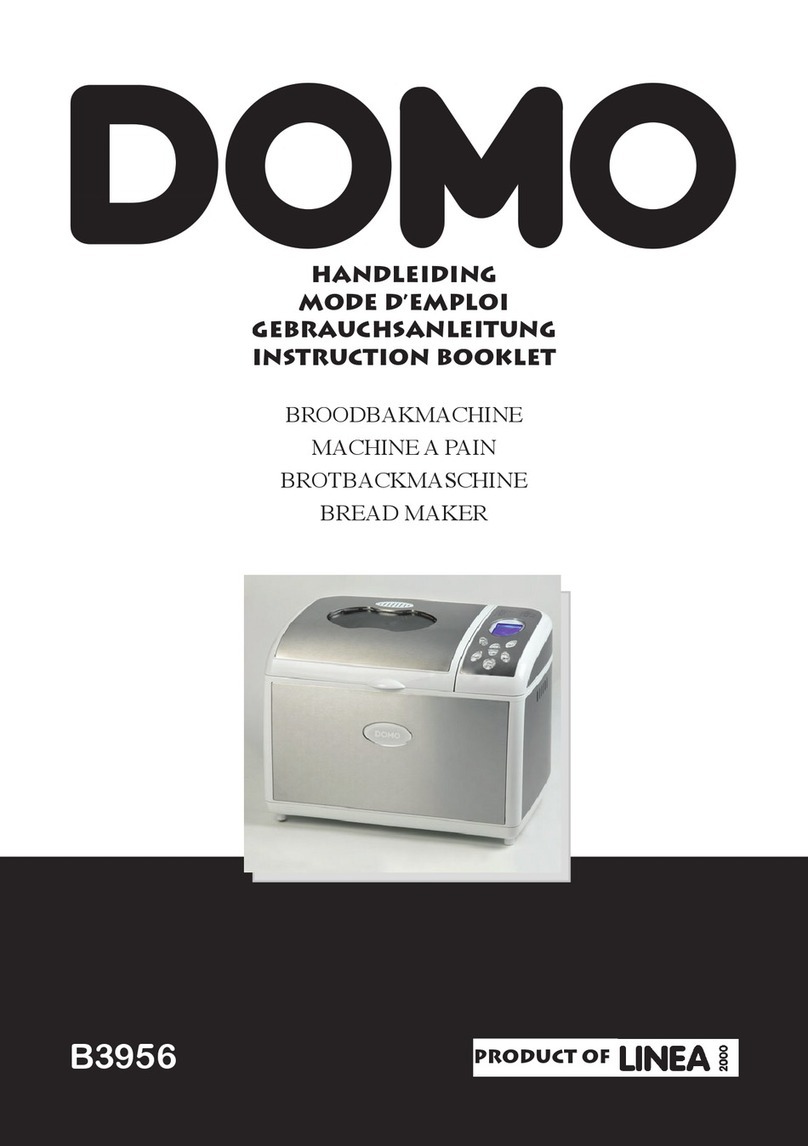
8
How to Use
3
LAST: Yeast. MUST be separate
from wet ingredients
SECOND: Dry ingredients (sugar,
salt, shortening, flour)
FIRST: Liquid ingredients
Before first use:
• Check for any missing or damaged parts.
• To remove Bread Pan, carefully lift up on Handle and turn Bread Pan
counterclockwise; then pull Pan out of Bread Maker.
• Clean all parts according to Care and Cleaning section.
• Set Bread Maker on Bake mode and bake empty for about 10 minutes.
Let unit cool down and clean all detached parts again. Appliance may
emit a little smoke and/or odor when you turn it on for first time. This is
normal and will subside after first or second use. Make sure appliance
has sufficient ventilation.
• Appliance is ready for use.
wCAUTION
Falling Object Hazard. Bread maker can wobble and walk
during kneading cycle. Always position it in center of counter away from
edge.
1.
Place Bread Pan into Base and make sure it is firmly locked in place by
turning it clockwise.
2.
Push Kneading Paddle onto Drive Shaft inside Bread Pan.
3.
Add ingredients to Bread Pan in order listed in recipe. First, add liquids,
sugar, and salt; then flour; and yeast last. NOTE: Make sure yeast does
not come into contact with salt or liquids.
4.
Plug into outlet. A beep will be heard and display will default to Cycle 1.
5.
Press (menu) button until your desired cycle is displayed.
6.
Press (loaf size) button to move arrow from 1.0 lb., 1.5 lb., or 2.0 lb.
loaf size. (Loaf size is an option in Cycles 1, 2, 5, and 11.)
7.
Press (crust color) button to move arrow to desired setting: (light),
(medium), or (dark). (Crust color is an option in cycles 1–7 and 11.)
8.
If desired, set Delay Timer with or arrows. (Delay function is
available in Cycles 1, 2, 5, and 11 for up to 15 hours.)
NOTE: Do not use this feature when using dairy, eggs, etc.
9.
Press (start/pause) button to begin cycle. Bread Maker will beep
once and “:” in digital display will begin to flash, indicating timer is
counting down. Kneading Paddle will begin to mix your ingredients. If
Delay Timer was activated, Kneading Paddle will not mix ingredients
until cycle is set to begin.
10.
To add mix-ins, before second kneading, 12 beeps will signal when to
add fruits, nuts, etc.
11.
Once baking cycle is complete, machine will beep 10 times and shift to
Warm setting for 1 hour. Unplug when not in use.
12.
Use oven mitts to remove Bread Pan. Carefully lift up on Handle and
turn Bread Pan counterclockwise; then pull Pan out of Bread Maker.
Let Bread Pan cool for 5 to 10 minutes on a wire cooling rack before
removing bread, and let quick bread cool 10 minutes before removing to
a wire cooling rack.
13.
Before removing bread from Bread Pan, use a thin rubber spatula to
loosen sides. Using oven mitts, with Bread Pan Handle folded down, turn
Bread Pan upside down over a wire cooling rack and gently shake until
bread comes out.
14.
If Kneading Paddle remains in bread, gently pry it out using Paddle
Hook.
15.
If Kneading Paddle is stuck in Bread Pan, let Bread Pan soak in 1 cup
(240 g) of warm water for 15 minutes. Using your fingers, move paddle
around and pull straight up to remove.
NOTES:
• If wrong cycle has been selected, press and hold (start/pause) button
to cancel at any time. Bread Maker will beep and automatically turn off.
• Fresh-baked bread is best when consumed as soon as possible. To store,
wrap cooled loaf in foil or a plastic bag to preserve freshness.
• Bread can be stored in refrigerator for up to 10 days or frozen for up to 6
months.
• Allow bread to cool and slice with a bread knife.
• Unplug when not in use.
